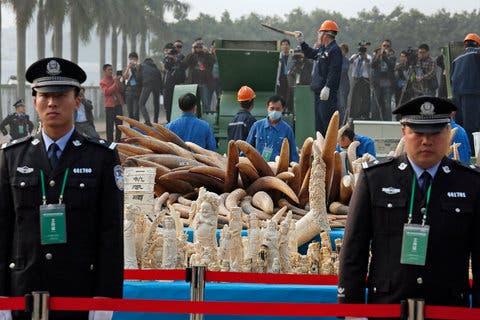
As China’s populace grew in affluence and trade restrictions with other countries became more permissive, the past couple of years have seen a dramatic surge in ivory making its way towards China – in consequence elephant poaching has grown to record heights, as expected. In a historical event, China for the first time destroyed part of its seized lot of ivory. Some six tonnes of ivory ornaments and tusks were obliterated in Dongguan, a city in the southern province of Guangdong, which is a major hub for the ivory trade.
[READ] China is killing Africa’s elephants
Environmental groups have herald the event has a strong anti-poaching message from behalf of the country which is home to the largest ivory market in the world, and have congratulated Chinese officials for this bold move. The highly publicized event was attended by state officials, foreign diplomats and wildlife campaigners, in hopes that nationwide awareness on the subject may be raised.

USFWS / YouTube
China followed the United States’ example, which last November destroyed all the seized ivory in its possession – again some six tonnes. Figures are hard to come by, but the Wildlife Conservation Society said on Monday that the total amount of seized ivory still in the Chinese government’s possession amounts to some 45 tonnes.
“If China were to destroy the remainder of its ivory stocks and lead the world by committing not to buying ivory in the future,” said Cristián Samper, president and chief executive of the Wildlife Conservation Society “it would have a transformative, positive impact on the survival of African elephants.”
More than 30,000 elephants are killed for their tusks each year in the lucrative trade that sells at around $1000 per pound. The event in Dongguan should help hammer home the message a lot more clearly, wildlife activists now hope. There’s a lot more to it, and although the event is admirable in its intentions, the world is hopping there’s some actual measurable improvement following it.






